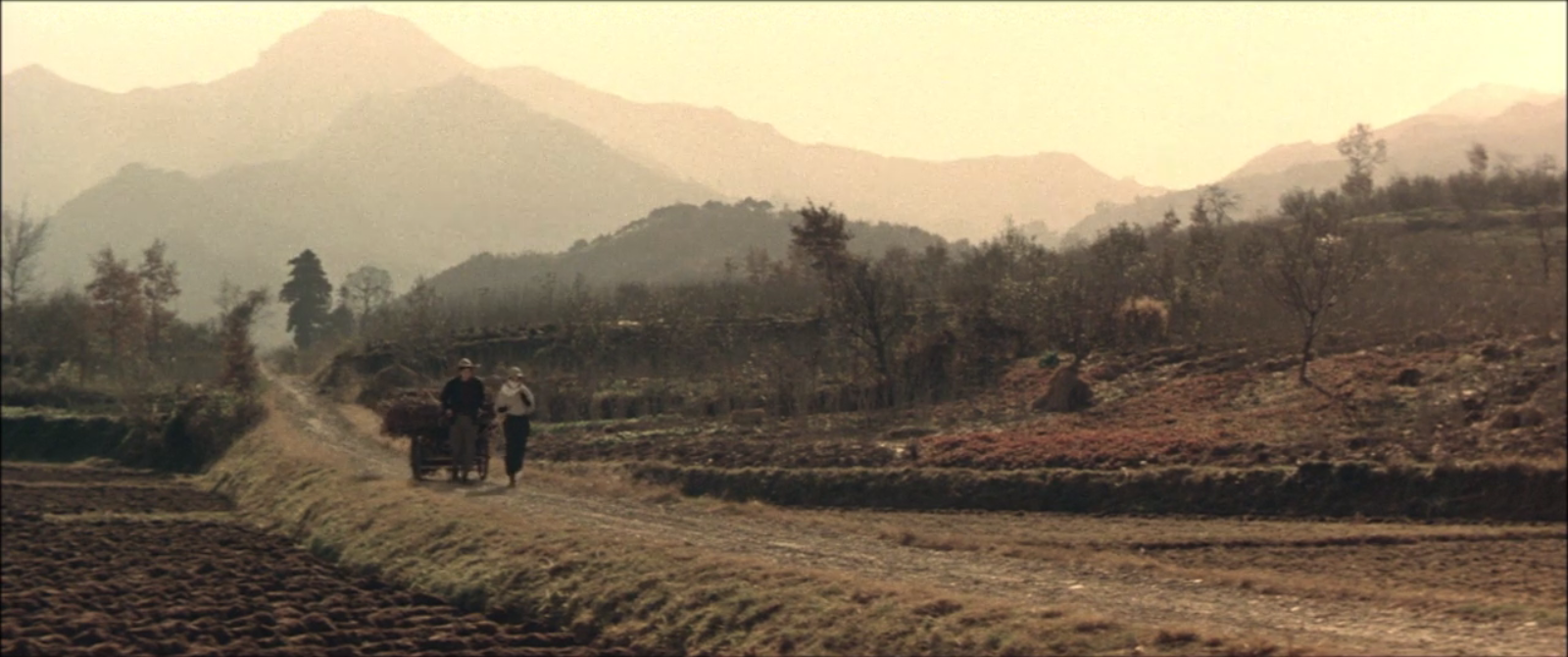
All right, another sets of photographs. Actually I don’t know if these are rarely seen or not, but just I haven’t seen them before.
Top: Ozu contemplates in the set of WHAT DID THE LADY FORGET? (SHUKUJO WA NANI WO WASURETAKA, 淑女は何を忘れたか, 1937). The film opened in March 1937, while Ozu was drafted to the Army in September of the same year and sent to China for two years. (Feb. 1, 1937, Kinema Junpo)
This is a very rare ad of THERE WAS A FATHER (1942), which I found in the magazine SHIN-EIGA (Feb. 1942). Because of poor quality of paper and printing (wartime material shortage), the details of the photograph are smudged. It appears Ozu (second from right, with a hat) was lying on the ground, as the camera was positioned very low even in exterior shotting. The caption reads, “Ozu working on elaborate camera angles”.


This photo is from 1930 February issue of Kinema Junpo. In September of the previous year, the group of filmmakers gathered at the château of La Sarraz, Switzerland.

The meeting was called “Congress of Independent Filmmakers“. The attendees include:
Sergei Eisenstein
Gregori Alexandrov
Eduard Tisse
Walter Ruttman
Hans Richter
Béla Bálazas
Leon Moussinac
Ivor Montagu
Alberto Calvanti
Higo Hiroshi
They discussed about the future of “independent filmmaking”, and the heat of creative minds ignited the spontaneous production of a short film called THE STORMING OF LA SARRAZ. Supposedly, Eisenstein played Don Quixote in this film. Here, he is riding the projector instead of Rocinante. The film is believed to be lost. According to the record, it was never publicly shown anywhere in the world, except once in Tokyo in 1930.
Lee Hsiang Lan (李香蘭). She was the most popular Chinese actress and singer in Manchuria and Occupied China during late 30’s and 40’s. She appeared in more than 20 films until the end of the war, playing romantic leads against sweet-face Japanese actors. After the war, she was tried in Chinese war tribunal as a traitor (accomplice to Japanese propaganda). However, it turned out she was actually a Japanese, faking her nationality, though it was a persona created by Manchurian propaganda machine. Nearly everyone was fooled because of her perfect command of Chinese language. After the war, she appeared in many Japanese films, including Kurosawa’s SCANDAL (1950), as Yoshiko Yamaguchi.

The group of filmmakers assembled by Kinema Junpo to visit Manchuria. Hiroshi Shimizu (second from right), Tomu Uchida (third from right), Kenji Mizoguchi (third from left) and Hisatora Kumagai (fourth from left). October 1939.

Isuzu Yamada and Jouji Oka in action. The movie is TSUTA (JAPANESE IVY, 蔦, 1940, dir. Ryo Hagiwara). I am not quite sure if the film survives, as it is not listed in NFC’s archive. This kind of ‘back-lot’ open-sets provided efficient film production, since the sets would be refurbished for next film with minor renovation. All you need were a microphone, a couple of reflectors and a camera. Oh, actors and a good script, too.

And they sure look happy, don’t they?


